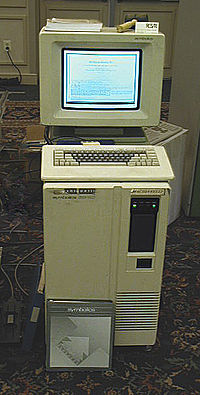
Back نظام خبير Arabic Sistema espertu AST Ekspert sistemlər AZ Експертна система Bulgarian Ekspertni sistemi BS Sistema expert Catalan Expertní systém Czech Expertensystem German Έμπειρα συστήματα Greek Sistema experto Spanish

In artificial intelligence (AI), an expert system is a computer system emulating the decision-making ability of a human expert.[1] Expert systems are designed to solve complex problems by reasoning through bodies of knowledge, represented mainly as if–then rules rather than through conventional procedural programming code.[2] Expert systems were among the first truly successful forms of AI software.[3][4][5][6][7] They were created in the 1970s and then proliferated in the 1980s,[8] being then widely regarded as the future of AI — before the advent of successful artificial neural networks.[9] An expert system is divided into two subsystems: 1) a knowledge base, which represents facts and rules; and 2) an inference engine, which applies the rules to the known facts to deduce new facts, and can include explaining and debugging abilities.
- ^ Jackson, Peter (1998). Introduction To Expert Systems (3 ed.). Addison Wesley. p. 2. ISBN 978-0-201-87686-4.
- ^ "Conventional programming". Pcmag.com. Archived from the original on 2012-10-14. Retrieved 2013-09-15.
- ^ Russell, Stuart; Norvig, Peter (1995). Artificial Intelligence: A Modern Approach (PDF). Simon & Schuster. pp. 22–23. ISBN 978-0-13-103805-9. Archived from the original (PDF) on 5 May 2014. Retrieved 14 June 2014.
- ^ Luger & Stubblefield 2004, pp. 227–331.
- ^ Nilsson 1998, chpt. 17.4.
- ^ McCorduck 2004, pp. 327–335, 434–435.
- ^ Crevier 1993, pp. 145–62, 197−203.
- ^ Leondes, Cornelius T. (2002). Expert systems: the technology of knowledge management and decision making for the 21st century. pp. 1–22. ISBN 978-0-12-443880-4.
- ^ "A short history of AI". The Economist. 2024-07-16. Retrieved 2024-08-14.